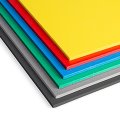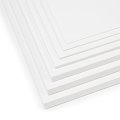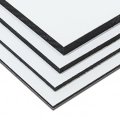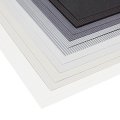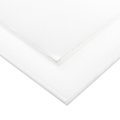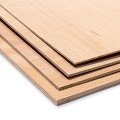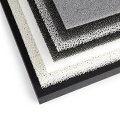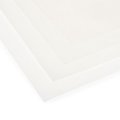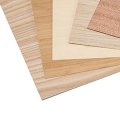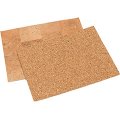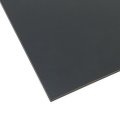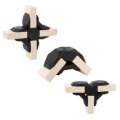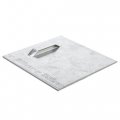PE & EVA Flexible Foam
Information about PE & EVA Flexible Foam
Production/Attributes:
That which is found being used as upholstery, as transport protection for valuable goods or as filtering, damping and insulation material as well as just plain home sponges and which goes by the name of foam or padding foam is almost always an open-celled PU (polyurethane) foam. It is produced through the polyaddition reaction of a polyisocyanate with a polyether polyol or, alternatively, a polyester polyol. Long, one meter high and 2.5 meter wide blocks of foam are formed through the addition of foaming agents and these are then cut into different sizes as needed.
PU soft foams are mainly open cell, permeable to air, breathable and water absorbent. Its most important attribute is, however, its elasticity; or, in other words, its reversible deformability - an attribute whose degree can be set during the production process according to the intended use. Foams are correspondingly defined according to their density and their compression load deflection (firmness) – a common padding foam, for example, has a rating of 35/55: the first number refers to a density of 35 kg/m³ (a one metre cube will weigh 35 kg); the second number refers to the firmness. In our example, the ?55” actually means 5.5 kPa (kilo Pascal) – for some reason the decimal point is left out (we leave it out too!). The ?firmness” level is determined by the amount of pressure necessary to compress a foam on a solid foundation to 40% of its thickness. The higher the given number, the firmer the foam. The following can be taken as a general rule: The higher a foam’s density, the longer lasting it will be and the greater its ability to rebound (resilience). A foam that has a low density will be less long-lasting and have less resilience; in short, if you completely compress a foam until it is almost flat, a lower density one will not come all the way back to its original height (did I say ?in short”? – sorry about that!).
Point elasticity/Area elasticity:
The lower the firmness, the greater the degree of the foam’s point elasticity and visa-versa: the greater the firmness, the more any pressure applied will be evenly distributed across the whole surface. An extreme example of this principle among the PU foam family is visco elastic foam, with its incredible point elasticity. The exact opposite of that example, and thereby the firmest foam, is called composite foam. To all this can be added: Cold foam has more point elasticity than conventional foam but is not even in the same league as visco elastic foam in this regard.
One disadvantage of PU foam must be mentioned: it tends to become yellowish. Bright (especially white) foams will begin to show signs of yellowing within a short amount of time; darker foams suffer from the same yellowing process but it is just barely visible or not even visible at all. The lighter coloured foams, however, do have the advantage that when covered with thin or likewise light coloured materials it will not show through.
Safety/Toxicity:
All the foams we have on offer have been made by a German manufacturer according to the guidelines set out by the soft foam industry. All our foams, with the exception of the (B1 German rating) flame resistant version, are certified by the Oeko-Tex 100 Association (group of research and test institutes dealing with harmful substances) and are absolutely safe for human use in accordance with current scientific knowledge. PUR foams will sometimes continue to give off a typical odour that some people find offensive; these more volatile foams have also been tested and found to present absolutely no health danger when used in the normal and proper ways associated with soft foams.
Types and Uses:
Lighter weight, less firm soft foams tend to be used in greater thicknesses because they are so easy to compress completely, which of course eventually robs them of their padding property. Heavier, firmer foams (for example, composite foam), on the other hand, are usually used in thinner profiles because their greater firmness means you do not need such a thick cushion to achieve comfort. Its greater density, however, means that it will be more expensive.
Our range of PU foams can be subdivided into the following categories:
- Conventional PU foam (padding foam) for padding and packaging – the standard foam. These are available in different densities: A low density foam is suitable for use in making children’s games or leg-rests - one way to look at it is that it is more suitable as a backrests than as a seat cushion. The 35/55 grade is THE standard foam for all padding purposes including reclining cushions and seat cushions. Please note that a foam with a higher density should be used, for instance, in the food services industry, in particular for seat cushions that must withstand heavy use or for overlay materials (cushions) that will have to endure a lot of punishment.
- Chip (Rebond) foam is a particularly firm foam. It is easily distinguished from other foams by its mottled appearance. Applications: thin seat cushions, bar stool or motorcycle saddle cushions, acoustic insulation, church kneelers, cushions for ale benches, etc.
- Convoluted (egg crate) foam has an unusual three-dimensional surface that is ideal for packaging and acoustic applications.
- Filter foam, which is endowed with a special permeability during the production process, is, as a result, used for technical purposes (we carry it primarily as a model making material.
Additional types of foam include:
- Cold foam – to put it simply, cold foam is the expensive version of conventional PU foam: an especially high quality and durable PU foam that is particularly elastic. It is often used for making mattresses or extremely comfortable and high quality seat or bench cushions.
- Visco elastic foam has a cotton wool kind of consistency, is extremely soft and point elastic. It is especially great for making seat cushions for things like wheel chairs where the time spent sitting will be exceedingly long and comfort is a must. Its primary use, however, is as a mattress topper for increased comfort when sleeping.
Processing:
The ideal way to cut soft foam is with a band saw or a hand-held foam saw that, like an electric kitchen knife, has two reciprocating (opposing) blades. The latter provides you with the cleanest cut because the elastic foam is less likely to be pulled out of shape as when cut by a basic electric saw. In contrast to polystyrene foam (polystyrene/Styrofoam, among others), PU foam does not really take well to being cut with THERMO CUTTERS. If you need to cut some soft foam but do not have any of the above mentioned cutting tools, it is better to use the serrated blade of a bread knife than the smooth one of an artist knife or cutter. Then, of course, there are the clever solutions: Some people will soak the foam and then freeze it. This allows them to cut into the temporarily solid block, which is of course much more stable. When doing cutting work with foam, you have to generally expect some amount of imperfections; a rule of thumb would be: the softer the foam the greater the difficulty in making a clean cut.
In order to double up two foam sheets (one on top of the other) for the purpose of attaching them to a wall, or for most other types of bonding work, SPRAY ADHESIVE or, alternatively, DISPERSION ADHESIVE (e.g. DECOTRIC POLYSTYRENE FOAM GLUE) should be employed.
Combining different foams with one another can dramatically increase the possible areas of use for foams: the combining of foams with different thicknesses or firmnesses based on the intended use is one example of this option. You should be able to find a perfect combination for any specific purpose you have in mind. A perfect example of this combination effect is the bonding of visco elastic foam with cold foam for making mattresses. Others would include martial arts mats or sports mats that are made by combining a top layer of firm composite foam with a bottom layer of soft padding foam.
